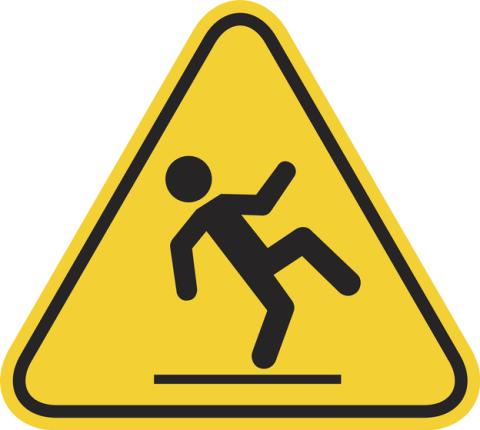When It Comes to Fall Prevention, Plan Ahead!
In 2018, a SUNY Binghamton research team studied a large group of older adults in upstate New York, and found that those who had received fall risk screening and had developed a Fall Plan of Care (FPOC) were less likely to suffer a fall-related injury that sent them to the emergency room or caused them to be admitted to the hospital.
“Fall prevention activities such as raising awareness about fall risk, identifying individual risk for fall, discussing fall risk prevention strategies and providing referrals to fall risk reduction programs in the community for older adults were shown to reduce fall-related hospitalizations,” said study author Prof. Yvonne Johnston of the Binghamton University Decker School of Nursing.
Having a fall prevention plan is every bit as important as any other planning. “Falls are one of the most common health problems experienced by older adults and are a common cause of losing functional independence,” says Dr. Mary Tinetti of Yale School of Medicine. “Given their frequency and consequences, falls are as serious a health problem for older persons as heart attacks and strokes.”
What should be in our plan to avoid falls? Here are ten research-based tips to consider as you’re creating your own fall prevention strategy:
- Know your personal fall risk factors. What health challenges might raise your risk of falling? Now or in the future, the list could include such things as mobility challenges from arthritis or the effect of stroke; vision and hearing loss; loss of sensation in the feet due to diabetes; memory loss; and the side-effects of medications you take.
- Talk to your doctor about your risk factors and how you can manage them. Your doctor can test your balance, muscle strength and flexibility, and evaluate other health conditions that could raise your risk, such as incontinence, arthritis or osteoporosis.
- Have your doctor or pharmacist review your medications. Bring in a list of all the medicines you take, both prescription and over the counter. Don’t forget to list herbal preparations. Always be alert for side effects of medications, such as dizziness, drowsiness and confusion, and report these promptly.
- Have regular hearing and vision tests. Keep your glasses prescription up-to-date. If you have bifocals or progressive lenses, ask your doctor if it would be safer to have a pair with a single prescription for walking. If you have hearing aids, use them.
- Give your home a safety checkup. Remove clutter and repair loose carpeting. Install handrails on stairs, grab bars in the bathroom, and improved lighting throughput the home. Sometimes even with modifications, a home just isn’t the right place for a senior with mobility or other challenges; think ahead about whether a move would make sense.
- Get plenty of exercise. Physical activity is one of the best ways to lower the risk of falls. If you are hesitant to exercise because you are afraid you’ll fall, ask your doctor for a “prescription” for activities that are safe and will improve your balance and all-around strength.
- Drink alcohol sparingly, if at all. At any age, having too many drinks raises our risk of falling. Hence the term “falling down drunk”! As we grow older, the effect is greater. Our bodies process alcohol more slowly over the years, causing greater confusion and unsteadiness. And taken with many of the medications seniors use, alcohol increases confusion, dizziness and other negative side effects.
- Build up your fall protection “radar.” So many times, it is the things we don’t expect that can trip us up. Think ahead as you make your way from place to place. Where is the curb? Are there branches or other obstacles in the path? Is there uneven pavement or ice and snow on the sidewalk?
- Wear the right shoes. Shoes should be well-fitted, with a low heel and a thin, hard sole. Replace shoes when they wear out. Avoid slippers and flipflops. Choose the right shoe for what you’re doing. For example, shoes that are perfect for the wood floor of a gym might become slippery on wet pavement. It’s best to let an expert help with your choice.
- Take a falls awareness class. Senior centers, senior living communities and healthcare organizations offer senior fall-prevention classes that help older adults assess their risk, improve their balance, and even learn how to “fall safely.” Participants report that taking a class with others is affirming!
We can’t predict every challenge we will face as we age, but considering the above ten items can help us mindfully reduce our risk of a debilitating fall injury.
